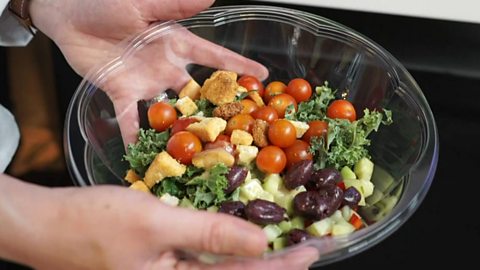Instant noodles and veggie sausages on toast could be just the sort of treat you look forward to on the bus home after a long day. So it may be a surprise to learn that both were invented when treats were pretty difficult to come by.
Just like the other foods listed below, these entered our lives at a time when certain ingredients, such as sugar, meat and cocoa, were in limited supply. Mainly due to war shortages (both during and after conflicts), they show how culinary invention can thrive when creators have to do without.
To begin, thereãs one mainstay of the breakfast table that has so many fans around the globe, it even has an annual day of celebration.
Nutella: A taste of cocoa
In the aftermath of World War Two, cocoa was a rare commodity. Supplies were so restricted that the little there was had to be made to go a long way. Luckily for Italyãs chocolate lovers, Pietro Ferrero knew the very method. A pastry maker from Piedmont, he created a sweet paste made mostly of hazelnuts and sugar with just enough cocoa to satisfy those wanting a chocolate taste.

Originally called Giandujot, the first sales of what would become Nutella came in small foil-wrapped ãloavesã. People sliced them in the same way you would a block of cheese. This was in 1946. Five years later, it became more spreadable and was available in a jar, under the name SuperCrema. Ferreroãs son, Michele, kept working at the recipe to improve it. In 1964, he developed a combination of hazelnut and cocoa creme (no longer so scarce) which finally bore the name Nutella. The distinctive jar with the sloping neck was introduced the following year. By 1978, a production plant had opened in Australia.
Today, fat-reduced cocoa makes up 7.4% of Ferreroãs recipe for Nutella.
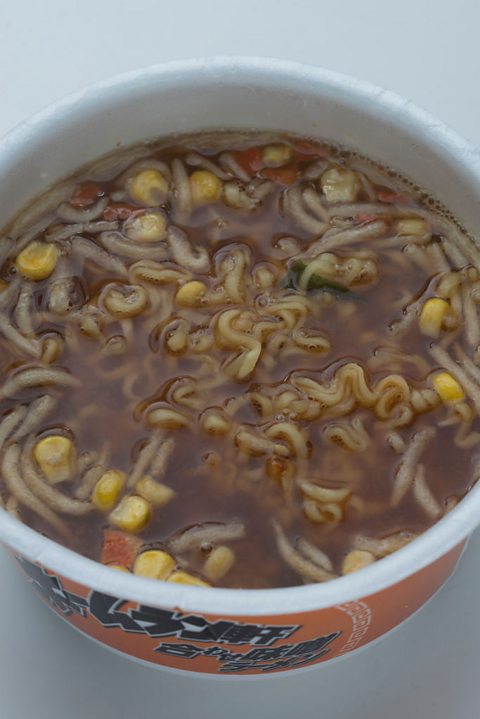
Instant noodles: Emergency food for the masses
If Nutella was a treat borne of scarcity, instant noodles came about out of complete necessity.
Momofuku Ando originally worked in banking in Japan. Following World War Two, the image of crowds queuing for some ramen soup next to a bombed train station stayed with him. The conflict had led to food shortages across the country and Momofuku believed one way to counter this was to invent an instant ramen, mass-produced, that people could eat anywhere.
The idea came quicker than the final product. It wasnãt until the 1950s that Momofuku found the answer after throwing some noodles into hot tempura oil. This dehydrated them, but crucially left them in a state where they could be rehydrated easily.
On 25 August 1958, his chicken ramen flavoured instant noodles became the first of their kind in the world. He was later inspired to sell the noodles in disposable cups after seeing people in the USA do something similar. In 2000, Japan named instant ramen as the greatest invention of the 20th Century. A Cup Noodles Museum now stands in Momofukuãs home city of Osaka.

Vegetarian sausage: Brainchild of a future German chancellor
In the First World War, food shortages were rife. Queues outside shops formed in cities throughout Europe as the conflict disrupted the usual distribution of goods. In the German city of Cologne, blockades by the British meant the population were beginning to starve and ingenuity had to come to the fore to put substantial meals on the table.
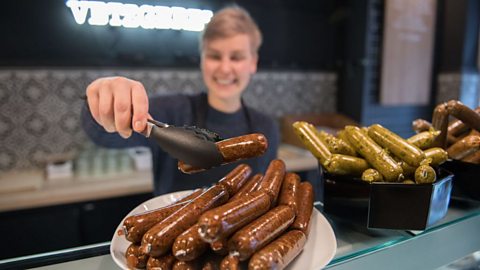
Fortunately for Cologne, its mayor, Konrad Adenauer, was a man brimming with invention. He made it his mission to come up with substitutes for traditional meat-based dishes using non-meat ingredients. Adenauer found that soya provided a similar texture to sausage meat and combined it with other ingredients to produce something that could be made relatively easily by the cityãs families. He even went as far as naming it the Friedenswurst, which translates as the ãpeace sausageã.
That wasnãt the last of Adenauerãs achievements. He became chancellor of Germany from 1949 to 1963.
Twinkies: For when thereãs no bananas
To British audiences, Twinkies are more associated with the grocery bags and kitchen cupboards of US TV characters than our own supermarket shelves.
First made in 1930 by the Hostess company, the Twinkie enjoyed more than 10 years of success with a banana cream filling, so imagine the problem when World War Two left the fruit tricky to acquire.
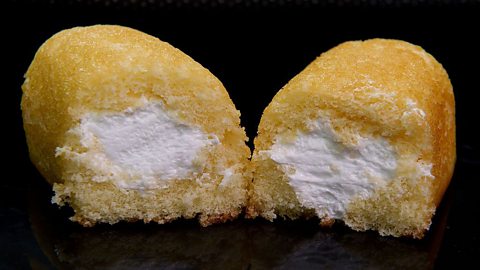
Instead of giving up, the Hostess team went back to the drawing board and found an alternative recipe using a marshmallow cream filling within a finger of sponge. The substitute became even more popular than the original and sales exceeded all expectations.
Production almost ceased in 2012, but Hostess was saved with a last-minute buyout and more than a million Twinkies (the marshmallow version) were made every day in 2015.

Carrot Cake: Thereãs sugar in those veg
The history of carrot cake is difficult to pin down. What is known is that it was promoted by the Ministry of Food in Britain during World War Two as a way to stop people using so much sugar, which was rationed at the time.
This was due to the natural sweetness that carrots possess, which was considered a substitute for sugar at a time of strict rationing. The Ministry of Food even had a carrot-based recipe for Christmas pudding.
It meant there was no need for people to deprive themselves of a slice of cake during tough times (carrots were not rationed) and its popularity endured enough that itãs widely available today.

Myth-busting food origin stories
Chocolate chip cookies, crisps and Caesar salad all have legendary histories, but are they true?
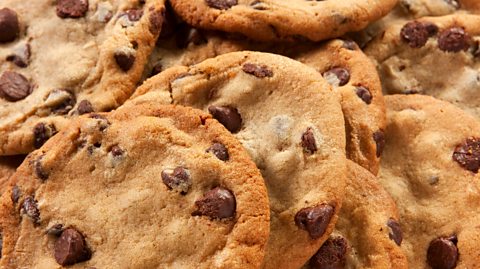
Why donãt we all like the same foods?
How genetics, your mum's diet and bad experiences can shape your tastes.

Vegetarians and vegans
Vegetarians and vegans live by specific dietary guidelines. Find out more with this Home Economics: Food and Nutrition guide (CCEA).
